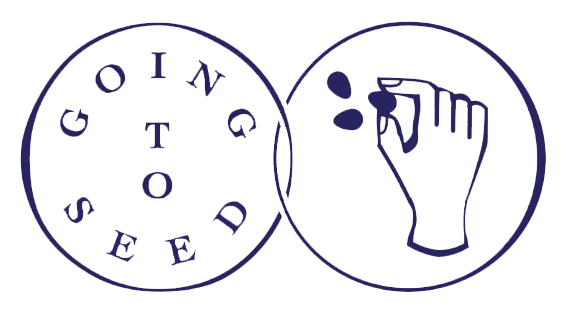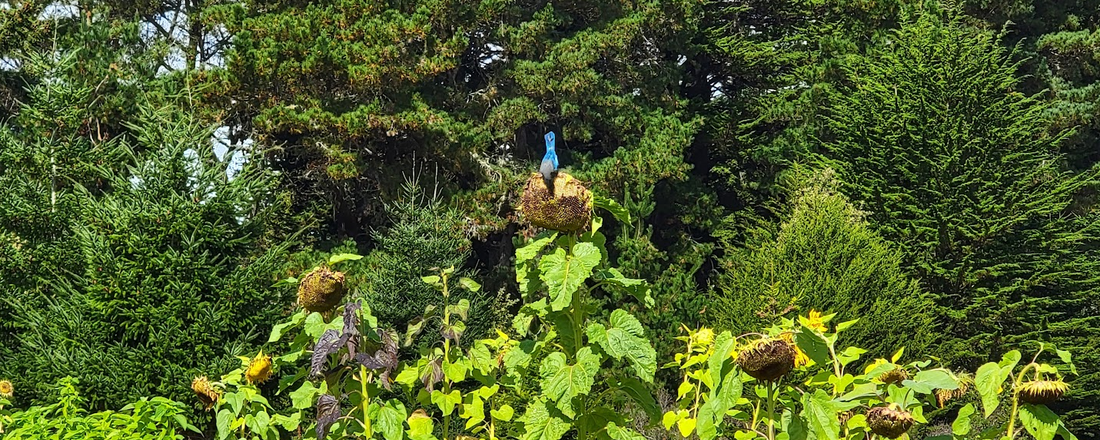by Lowell McCampbell

What does it mean to say that if something isn’t eating your plants (besides you, of course), then your garden is not part of the ecosystem? This image, which I’ve seen on gardening social media pages, talks about a concept I am shifting toward in my growing. In the past, I have been immensely frustrated by crop damage from the insects and animals where I live. More recently, I’ve let that frustration go by realizing the ecosystem is helping the plants I grow, and myself, become more a part of it.
So what is an ecosystem, and how is the garden and ourselves part of it?
By definition, an ecosystem consists of all the organisms and the physical environment within which they interact, both with other organisms and with non-living elements. These interactions make up nutrient cycles and energy flows, with the basis of all energy (in most cases) coming from the sun through photosynthesis.
Although this definition does not convey what it is like to be outside in the woods or in most gardens, surrounded by life, it does convey the point that the sun’s energy is captured through photosynthesis and stored in sugars and cellulose, which then trickles down to feed all the other living things through their interactions with each other.
Regardless of where we are, or how we farm and garden, we are always in an ecosystem, in relation to all the organisms however small or large. What we see is only ever a fraction of what may be in that ecosystem at any given time of year. Perhaps in monocropped regions, this is less true, but I hope that in the garden, and on most farms, there is an abundance of diverse life.
Everybody eats
In my home in North Florida, we have many insects gnawing on nearly everything during the warm months. Despite how frustrating it can be to see insects chewing away at unripe tomatoes, or going only for the seed pods of legumes, I know these insects are feeding many of the other things I love about where I live: the bluebirds, the bats that fly in the evenings, and the grasshoppers and crickets, which then feed the garter snakes and hawks.
I am part of the ecosystem through noticing the interactions of the weather, plants, insects, and animals. They tell me things about how I should garden, when to plant certain crops, and which plants to save seeds from. My interactions are responses to what the other living and nonliving things have to say. I also eat here, just like everyone else. I believe my role is to listen and figure out how to encourage the ecology so that it can nourish me and all the other living things with abundance.
In my garden, insects and animals are shaping what I grow. Their deliberate consumption of plants is helping the plants adapt to my conditions. I also contribute to this process by choosing to save seed from more resistant plants, or by growing plants already better adapted to this ecosystem. While the saladette and paste tomatoes are a major magnet for insects, I have found several wild species of tomatoes that are unappealing to the stink bugs and caterpillars, yet extremely tasty to me. The same goes for the wheat I grow. Earlier-maturing varieties skip all the insect pressure, and often the diseases associated with warm, humid weather, and the later varieties struggle. This has pushed me to shift my seed saving toward earlier wheat varieties, which results in less insect damage and disease.

Animals, such as deer and rabbits, help with the selection process by encouraging plants to become resistant or vigorous. I planted pear saplings a few years ago, and the deer annually strip them of their spring leaves. They must be able to endure the loss of these leaves for several years before growing tall enough to avoid the deer. Some saplings die from this, but there is a real difference in vigor between those that do die and the ones that resist the deer.
With legumes, one particular variety of cowpea has been able to resow itself for several years now without my help or protection. It grows vigorously, producing huge plants that climb high out of reach of the deer, and, at the same time, it can take repeated grazing. While it can be frustrating to see the deer strip pear saplings of their leaves or eat down legumes, I remember they are a source of food that I and some of my neighbors enjoy. When they eat from the plants I grow for my own consumption, I may still be feeding myself and my community.
It’s complicated
In an ecosystem, no interaction happens alone. The result of these interactions I participate in may be the sight of a hawk, smaller and tastier tomatoes, earlier wheat, or more vigorous and resistant plants. These plants, which are able to survive in this vibrant ecosystem of chewers, grazers, sap suckers, and all other sorts of living things, identify themselves through their show of vigor; my role is to notice them, encourage their growth, and enjoy the food they give as much as all the other animals do. Instead of feeling frustrated by seeing crops being eaten, I appreciate the actions of all the living things, knowing they are helping cultivate the plants to adapt to my environment.
Achieving this mind-shift can take a lot of time, or none at all, but once you’ve made it, everyone flourishes.

